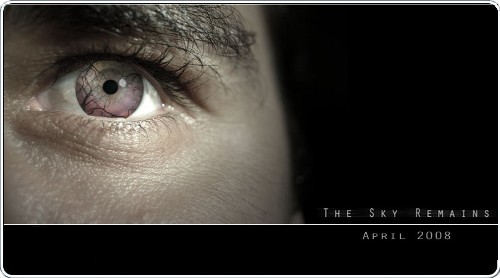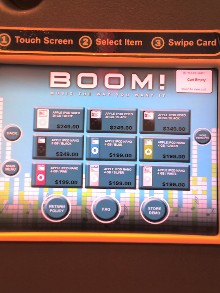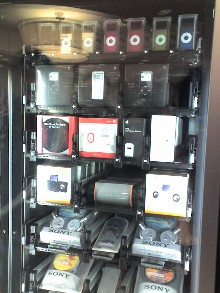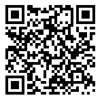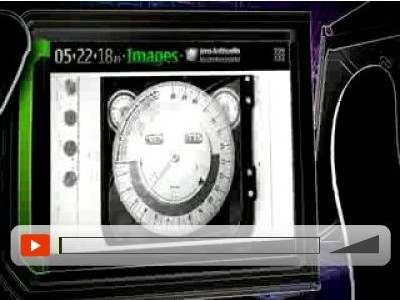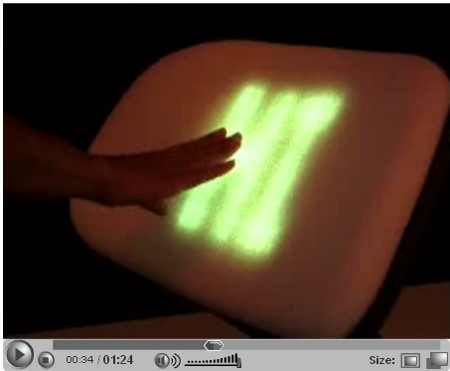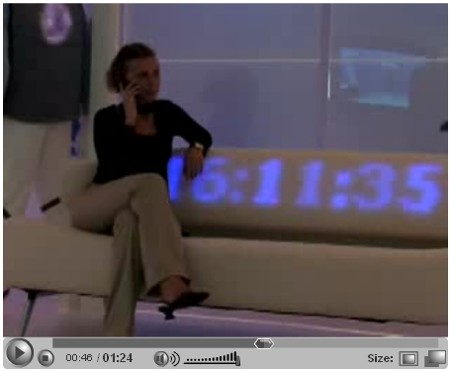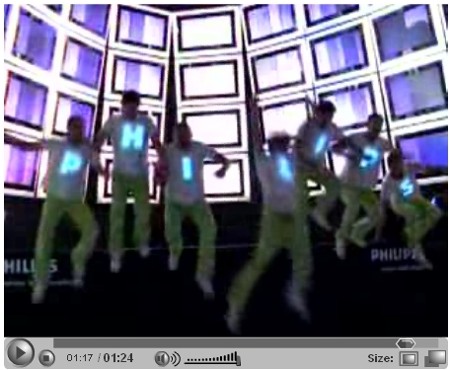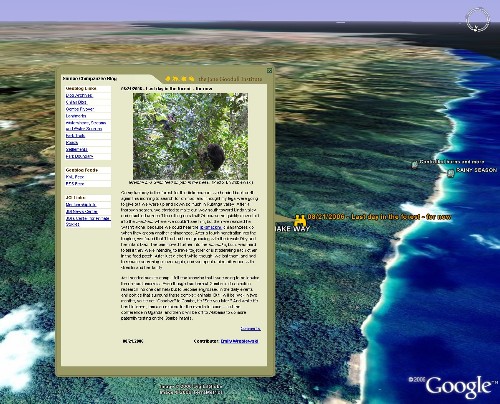February 14, 2008
October 3, 2007
going to bristol for mscapefest '07?
Let me know if you're going to be in Bristol UK for the Mediascape conference on 3 December, mscapeFest '07. I'm hoping to go, and the more fellow pervasive gamers and pub crawlers, the better!
May 19, 2007
sign o' the times: ubivending
I think this is maybe what Patrick was thinking when he invented "UbiVend". Click to enlarge.
May 8, 2007
context-aware mediascape service launches
Over in Shanghai, we just announced the public launch of the mscapers.com web community for development and publishing of mediascapes. Ubicomp and geospatial media folks may know of this work via the long-running Mobile Bristol project and various public deployments (Yosemite, Tower of London, Riot 1831). Pervasive gaming fans may have caught the Sign of the Sorceress video, the alien invasion at 3GSM, or Ere Be Dragons at GDC. So now's your chance to play with the toys, get your hands on the tools and build some context-aware experiences of your own. It's beta of course, so things will start pretty simple and improve with community feedback. But even at this early stage the tools are very sophisticated and the games, walks and tours are immersive and fun.
To get started playing you need a mobile device with windows mobile and GPS capability, something like this is ideal but there are plenty of alternatives that should work. Last summer when I was on sabbatical building 'scapes, I used an old iPAQ with a bluetooth GPS module, and it worked pretty well.
So find some gear and go play -- I'd say start with Always Something Somewhere Else by audio artist Duncan Speakman, or maybe the Hidden Danger UXB minesweeper game. Then you can fire up the tools and inspect the script code to see how they were built. I have to warn you, it's pretty addictive once you get started.
May 5, 2007
May 3, 2007
the coming age of enraging technology
Lousy design and poor failure scenarios are going to be the downfall of ubicomp systems.
I've been on the verge of a screaming fit twice in the last two days, due to the wonderful digital technologies that are becoming pervasive in my life. And at least twice more, I have just shaken my head in disbelief and shame at the ignorance of certain design engineers. I'm going to tell you about these experiences.
Screaming fit #1. I go to my neighborhood gas station to fill up. Swipe the credit card, start to pump, and nothing. Wiggled stuff, pushed buttons, tried to restart the pump -- finally got 30 cents of gas to flow. The station attendant comes out, asks me to try a different pump so I do, and the same thing happens, this time 25 cents. He shrugs and says they must have run out of gas. So I go down the street to another station, swipe the credit card -- DECLINED. The Visa fraud detection algorithm detected a card theft in progress, and locked me out. Unbelievable, I'm incensed. I don't have my phone, so I steam all the way home and call Visa, where I have to endure a 5 minute automated transaction verification process before I can talk to a person. I'm sorry to say I was not very nice to her, but she cleared the lockout anyway. She offered to let me explain to their security team just how lame their algorithms are, but I couldn't see what good it would do, so I said goodbye.
Screaming fit #2. I go to the united.com website to use online check-in for a flight. It pulls up the right records from the database, but it says it can't find a valid e-ticket for the reservation, so I can't check in. Fine, so I call the United reservation desk. Actually it's a voice response system, one of those you have to talk to. Just knowing this, my BP starts to rise. It asks for my confirmation #, but after three tries of spelling it out, it cannot figure out what I am saying. It asks for flight date, flight number, airport and last name, and finally finds the reservation, but still wants me to follow one of its preprogrammed scenarios. I ask for a human in every way I can think of, but I'm stuck in a voice-response cul-de-sac. Now I'm yelling and cursing at a digital voice synthesizer, and it's not helping anybody. Finally it gives up and transfers me to a human, promising that all the info I gave it will be transferred to the person's screen. It wasn't. I'm sorry to say, I was not very nice to that person either, nor to the next person they transferred me to. After that it got worse before it got better, but you get the picture. Oh, a possible silver lining to this story -- I was told by one of the agents that if you hit "0" or "#" 3 times, the system will send you to a human. Remember that for next time.
Head shaker #1. In our newly refurbished conference rooms, they installed automated control systems for the projector and the conference phone. In order to use these appliances, you have to get up from the table, walk over to the corner of the room, and interact with a little touchscreen panel. Turn on the projector? Walk. Dial the phone? Walk. Mute the phone? Walk. Hang up the phone? Walk. Stupid loser designers, what were you thinking?
Head shaker #2. Same newly rebuilt conference rooms. Ethernet jacks installed into the tabletop, cables carefully shrinkwrapped and routed under the floor. For a room designed to hold 12 people, there are 4 jacks. And three of them are broken in some non-obvious, non user-serviceable fashion. And we're a freakin' computer company, go figure that one out.
I hope ubicomp really does take a hundred years. That way I'll be spared the indignity of having to use it.
April 1, 2007
we call it the physical hyperlink
Tim Kindberg in the New York Times: New Bar Codes Can Talk With Your Cellphone.
March 22, 2007
'ere be dragons: a context-aware pervasive game
Check out Alex Vorbau's excellent vlog post on 'Ere Be Dragons, a pervasive multiplayer game that uses GPS and heart rate sensors to create a novel game mechanic. The game is built on HP's mediascape platform, and it was being demo'ed at GDC earlier this month. Lots happening on the mediascape front these days, and stay tuned for more goodness ;-)
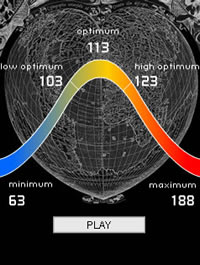
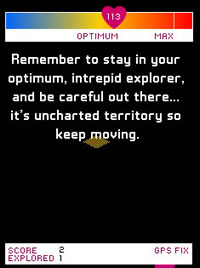
January 26, 2007
concept video: the future of pervasive games?
If you're a fan of ubicomp street games and mobile experience design futures, check out this fun pervasive gaming concept video from HP, (officially titled "Roku's Reward", although I like to think of it as "Sign of the Sorceress" after the game). And for a good compare & contrast exercise, go back to the interesting Nokia Explore 2012 concept video that Matt Jones posted, which sketches some clever mobile/media interaction ideas.
January 23, 2007
regine & nicolas interview adam greenfield
I don't think I've seen this before -- an interview spread across two different blogs. Some of it is on WMMNA, and there's some more on Nicolas' blog. Both worth reading, especially when Adam gets all Sterling-esque and springs this phrase: "...for everyone living in some bootstrapped Pearl River Delta newtown there'll be a hundred of us living in the "installed base" of existing, legacy cities." Sweet.
December 13, 2006
a lovely locative diversion
This is a nicely designed locative media project: My Washington Square by Alexis Lloyd.
My Washington Square is an experience-mapping project exploring contemporary and historical stories situated in New York’s Washington Square Park. Through personal stories submitted by online visitors as well as historical information, this project explores the ways in which physical spaces contain many layers of memory and experience. You are invited to explore the stories submitted by others and to share your own experience of this rich and complex place.
It would be a fun project to adapt this into a situated mediascape.
[via the excellent rhizome.org]
December 11, 2006
some more placecasting and neogeo stuff for ya
Still no original information here, but do visit these nice neo-geography sites while you're waiting...
* Drop Spots -- Spy novel dead drops for the Random Acts of Kindness crowd. "To create a new Drop Spot, find a hidden nook or crevice in your neighborhood to tuck away a simple gift you would like to share; perhaps a poem, photograph, favorite quote, or mix CD—something fun that represents you. Then log on to dropspots.org to map and describe the secret location of your gift so others can find it."
* Platial blog -- Neogeo web service Platial seems to be having more fun than most of the fledgling geo sites I've seen.
* outside.in -- In case you hadn't seen it yet. Writer Steven Johnson tries his hand at starting up.
* geoGreeting -- I'm not going to try to explain, you just have to see it (but it can be slow so wait for it).
November 21, 2006
call for proposals: where 2.0
The CFP for O'Reilly's Where 2.0 conference is now up, through Jan 5th.
November 20, 2006
don't call us sensible
Long known as a maker of sensible computers and printers, Hewlett-Packard is trying to bust out of that image. To capture more youthful consumers, the stodgy Silicon Valley firm said last week that it’s looking into adventure games that could be played with its iPaq smart phones.Making games that can be played using iPaqs and GPS technology could be one way to increase HP’s market share in the smart phone and PDA market. The Palo Alto, California-based company is testing a game in England that lets players attempt to break out virtual prisoners from the Tower of London. “This is part of a wider project we are running to investigate how locative services might evolve based on user experience,” the company said in a statement.
Mmm, interesting ;-)
November 17, 2006
the bluetooth ball
![]()
Peter showed me a very cool new device which he called the "bluetooth ball". It's basically a ball about the same size as a golf ball, but contains some fun integrated sensor and communication technology that allows it to act as a 6 degree of freedom motion sensor. It contains a MEMS accelerometer and bluetooth, and among other things "can operate as a free-hand personal computer mouse, compass, measuring tape, pedometer, or a 3D-object controller", according to the joint press release from Finland-based Ball-IT Oy and ST Micro.
Put that in your blogject and smoke it ;-)
October 30, 2006
mobile 2.0 next week
If you're going to Mobile 2.0 in San Francisco next week, drop me a note. This handy solution for what to do while waiting for the big Web 2.0 conference to open, is produced by the Mobile Monday folks, so expect a fun and geeky vibe. My good friend Peter Vesterbacka will be hosting a Mobile Launch Pad session, which do not miss.
October 11, 2006
regarding web 3.0
I note with amusement that the Wikipedia article called "Web 3.0" has been proposed for deletion. Given that the article currently equates web 3.0 to the semantic web (and there has apparently been something of a campaign to make this connection), I say delete away. The semantic web is just one of a host of speculative future concepts that would love to usurp the throne of popular acceptance implied by the term web 3.0. The Wikipedia imprimatur, such as it is, should not be used to endorse wishful thinking.
Which is just too bad, since I was doing a bit of my own wishful thinking about web 3.0, and a certain alternative speculative future where the social media web crawls out of your PC and spreads like fire ants into the physical world, into things and places and people, into all kinds of new devices, across all manner of networks. I may have even described this future as "web 3.0" last year in my Web 2.0 conference talk, although I can't honestly say for sure. Funny how being live on stage is a little different from rehearsals ;-) I know that Bran Ferren did use the term in his Web 2.0 talk, you can hear him talk about it in this podcast (around 18 minutes in), where he defines the 3.0 challenge as one of moving human-computing interfaces from the simple, intuitive kazoo-like stage of KVMs to the subtle, expressive and communicative violin stage of rich, specialized, multimodal interfaces. Anyway, I suppose my point is that the term "web 3.0" could plausibly be applied to the emerging world of web-based social media, created and delivered via the emerging platform of diverse, distributed, ubiquitous computing.
Just don't try to put that in wikipedia.
October 6, 2006
These machines are METHODICALLY KILLING OUR SOULS!
In case you didn't see it, Bruce Sterling has a short fiction piece in the New Scientist, "I saw the best minds of my generation destroyed by Google".
That creepy "differential permissioning" sure saves a lot of trouble for grown-ups. Increasing chunks of the world are just... magically off limits. It's a weird new regime where every mall and every school and every bus and train and jet is tagged and tracked and ambient and pervasive and ubiquitous and geolocative... Jesus, I love those words... Where was I?
Sweetness.
[via last month's ish of the everyware times]
a convivial bunch of geowankers
Last night we held what will undoubtedly be looked back on as the first international geowanking conference (iWank1?). Okay, so it was basically a dozen or so interesting folks from the geowanking mailing list hanging out and talking, but still.
Rich Gibson led a freewheeling discussion that wandered from probabilistic definition of socially constructed locations (e.g., where is SoMA?), through Plato's Forms, to geospam. Rich raised an interesting question of whether there is a "right of representation"; for example, if some random actor creates a sketchup model of your home and geolocates it on Google Earth, do you have any rights in or control over that representation? I think this is one of a class of related issues that arise from physical+virtual intertwingling, that we will be wrestling with in the next few decades, a bit like the domain name squatting/trademark issue that we saw in the early days of the web.
Mike Liebhold (IFTF, starhill) wants his personal tricorder with seamless access across many data sets, but sees many barriers standing in the way. For example, he talked about the US government's Geospatial One Stop, a vast public repository of maps and geodata, how the contract to operate it had gone to ESRI, and how that decision led to the data being technically much less accessible to use by external services. Mike feels there is a fundamental tension between traditional GIS people for whom accuracy is the prime directive, and many geoweb people who are motivated by ubiquity of access and use of geodata. He also pointed to the significant increase in large corporations' interest in GIS and geodata, which might be a sign that this little corner of happy geohacking was soon to become a lot more crowded and commercial.
Greg Sadetsky has postage and pix.
Gratitudinality to Ian Smith White and friends at Urban Mapping for organizing and hosting. Simply wonderful, guys. (But doh, better get your host's name right Gene. Thanks Greg, the power of socially constructed knowledge triumphs again ;-)
September 27, 2006
dash: new in-car gps & networked platform
Dash Navigation had their coming out party at Demo yesterday. Their product Dash Express is an automotive GPS device with wifi and GPRS network connectivity, which provides sophisticated real-time traffic & driving time features as well as internet searches for points of interest. Apparently it uses car-to-car mesh networking in some fashion. Maps and device software are updated over the air. You can also have destinations sent to your car from any browser. Liz from GigaOM got a test drive and writes:
The device seems even cooler than originally thought, adding to real time routing recommendations and local info with gas prices and locations, nearby Craigslist listings, and whatever other useful things you want to set up to be pushed to you when you’re driving.
But also:
Some major downsides, though: when I got to go on a drive this morning, the CEO actually had to shove a paperclip into the thing multiple times to reboot it. Also, it’s going to cost at least $700, with a $12- to $14-per-month subscription.
I'm not so worried about prototypes that need rebooting, but that is a pretty steep pricing model. Hopefully it includes any required GPRS and wifi subscriptions, and the data plan had better be all-you-can-eat ;-)
So presumably the Dash has an IP address? I wonder how those are allocated, do you suppose they are using IPv6? What does their service backend look like? And where's the developer kit? Or is this going to be a closed ecosystem platform? Guess we'll find out in the next few months.
September 25, 2006
ubicomp 2006 blog roundup
Well I was off in the UK last week and thus unable to attend this year's Ubicomp 2006 conference, but fortunately several other folks have posted interesting and provocative thoughts. As the general chair of Ubicomp 2003, Joe McCarthy's perspectives (day 1, day 2, day 3) are particularly informed and informative. Molly Steenson's Ubi-recap provides a tasty inside view of the Exurban Noir workshop (pdf proceedings), along with some trenchant thoughts on the potential for architecture to enhance the overly tech-driven ubicomp worldview. Nancy Van House writes about the Pervasive Image Capture and Sharing workshop and waves us toward the PICS2006 ZoneTagged Flickr sets (1, 2, 3, 4). And Nicolas Nova riffs on the disparity of qualitative and quantitative methods in ethnographic study of ubicomp, and the potential for bridging them.
Good reading for days.
September 15, 2006
mediascapes: create-a-scape launches
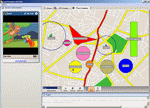


Create-A-Scape is a project to bring mediascape creation into schools in the UK. It is a project of Bristol-based Futurelab, along with contributions from HP Labs and support from the UK DfES. There is extensive documentation on the site, and you can download the HP Labs authoring tools for non-commercial use in schools ("This is a starter version of a broader toolkit to be released later in the year").
I used a prototype version of the authoring tools for some projects during my summer sabbatical, and I recommend them highly as a useful and intuitive package. You still need to futz with PDAs, GPS and maps, but overall the HP team did a nice job of balancing the capabilities, making simple things easy (visual, drag & drop authoring) and difficult things possible (C#-based scripting model). Although I did manage to break things by trying to run 20 audio streams simultaneously ;-)
mytago: yet another mobile 2D barcode service
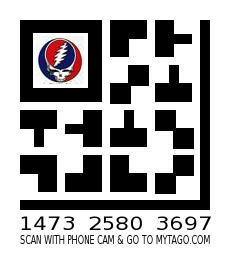
Wow, there's a lot of you out there. Mytago (blog) says "Use Mytago and convert your phone into a magic bookmarking and tagging tool. Use bookmarks from the offline world for online sharing and exploring. Connect your offline and online worlds." Magic tools are always a good thing, heh! And I like how you can customize the tags with your own little 48x48 px favicons. Time to go out and sticker up my world.
[via the skeptic]
smartpox: viral or virulent?
Heh, I see I'm not the only one who thinks that "Smartpox" is an ill-advised name. Dead 2.0 cracks me up with a list of other deadly-diseased companies you probably don't want to start. And Pat Phelan at FreeRoaming asks "Have they no feckin friends or something?"
Sorry Smartpox team, I know you've worked hard on this and the basic idea is good and also market-proven in Japan and S. Korea. But you probably should have seen this coming. Fortunately, they say there's no such thing as bad PR, right?
September 14, 2006
kaywa: another mobile 2D barcode service

As Roger points out in comments to the last post, Kaywa is a mobile physical hyperlink system that uses QR codes. I like their site, it has a fun and whimsical personality. Here's some links: reader.kaywa.com for the phone software, qrcode.kaywa.com for the QR code generator, and mobile.kaywa.com for a well-kept blog about mobile stuff.
smartpox: mobile barcode service
Smartpox is a service for generating physical hyperlinks using QR Codes 2D barcodes, sharing your codes, and resolving them using camera-equipped mobile phones. I'm not sure what is novel about this particular service, but it is another interesting data point.
I will say that I think the name "smartpox" is very unfortunate given its lexical proximity to smallpox. Yes, the clever viral implication is apparently intentional but it gives me an unpleasant visceral reaction. Maybe I'm just a bio-prude though ;-)
September 11, 2006
great vernor vinge talk at AGC
"Ubiquitous computing is sort of a slippery term. As with treason, it’s mainly a matter of dates."
Now that's a quote for the ages ;-) Vernor Vinge, one of my sci-fi heroes and author of the recent and hearty ubicomp-infused novel Rainbows End, gave a provocative speech about the future at the Austin Games Conference last week. Mark Wallace transcribes Vinge's talk for us here (Mark's 3pointD blog focuses on "the metaverse and 3D web", and looks quite interesting).
"If you take together all of the things I have been pushing here, there really is a situation where cyberspace has leaked into the real world, in fact the title of the talk was Inside Out, which was intended to convey the notion of what was inside box in all eras up to ours, in this sort of era is outside..."Then there are microduration labor markets, a casual game that could be the end of occupations. To the extent that you have any spare time at all, if you’re in an environment like the one I’m describing here and you’re a flexible person with some expertise in something, that means you can actually make money on any job you can undertake and complete in 30 seconds... (I wonder if he's seen Mycroft?)
"A more extreme thing that many of us would be quite uneasy about, but it’s one thing I’m intrigued by is the notion of lifestyle cults. It’s something akin to a total information awareness system, the idea of somebody snooping on you all the time at a micro level is for most of us very offensive. It certainly frightens me, but you can imagine a voluntary total information awareness consortium as a commercial sort of thing."
And much more, go read the whole thing at 3pointD.
[via Raph Koster]
September 10, 2006
flexible light emitting shirts & furniture, must see
I really must have some of these. This is going to be so much fun ;-)
From the Philips press release:
Lumalive fabrics feature flexible arrays of colored light-emitting diodes (LEDs) fully integrated into the fabric - without compromising the softness or flexibility of the cloth. These light emitting textiles make it possible to create materials that can carry dynamic messages, graphics or multicolored surfaces. Fabrics like drapes, cushions or sofa coverings become active when they illuminate in order to enhance the observer’s mood and positively influence his/her behavior.The jackets are comfortable to wear, and the Lumalive fabrics only become obvious when they light up to display vivid colored patterns, logos, short text messages or even full color animations. The electronics, batteries and LED arrays are fully integrated and invisible to the observer and wearer. The jackets feature panels of up to 200 by 200 mm², although the active sections can be scaled up to cover much larger areas such as a sofa.
August 31, 2006
some placecasting-related bookmarks
A very humble and incomplete list of bookmarks of things relating mostly to georeferenced media and "placecasting". Last updated 2006-12-13.
Commercial Ventures
GaperGuide (Yellowstone N.P.)
Node
BarZ Adventures
Plazes
Platial
outside.in
Art & Design Projects
Invisible-5 (Interstate 5 in California)
My Washington Square
Research Projects
Nature Trailer (Donovan, B.; Strohecker, C., Wood, A.; Davenport, G. (Media Lab Europe)
Mobile Bristol (HP Labs, University of Bristol)
Urban Tapestries (Proboscis)
Audio Aura (Mynatt, Back et al, PARC 1998)
Guided by Voices (Lyons, Gandy, Starner 2000)
Hear There: An Augmented Reality System of Linked Audio (Rozier, Karahalios, Donath, MIT 2000)
Project Voyager (Chan et al, MIT 2001)
WebSign: Hyperlinks from a Physical Location to the Web (Pradhan et al, HP Labs 2001)
Geo Blogs & Sites
All Points Blog
Anything Geospatial (blog)
Brain Off (Mikel Maron blog)
Cartography (Canadian Cartographic Association blog)
David Rumsey Map Collection
Geowanking list archives
geoTorrent geospatial data distribution
Google Earth Blog
Google Maps Mania (blog)
GPS Tracklog (blog)
LADS (Location Aware Devices & Services blog)
Location Intelligence (business, news)
locative.us (Erle, Gibson)
Locative Media -- special issue of Leonardo electronic almanac
Locative Media Bibliography & Taxonomy (Bleecker, Knowlton)
Mapping Hacks (Walsh, Gibson, Erle)
NaviGadget GPS device blog
Ogle Earth blog
Open Source Geospatial Foundation wiki
SlashGeo newsblog/community
Space and Culture (Anne Galloway & friends)
Virtual Earth blog (Microsoft)
yourNav (news)
Positioning
Loki
Navizon (P2P wireless positioning)
Developer Stuff
Yahoo Maps API
Google Maps API
GeoRSS
mapufacture (GeoRSS aggregator)
mapstraction
August 30, 2006
gombe chimpanzee geoblog
The Jane Goodall Institute has a Google Earth-based geoblog. It's a pretty neat hack and visually quite spectacular, although I'm not sure the use model is quite right. Check it out: go to the Gombe Chimpanzee Blog, and follow the links in each placeholder post to the actual blog entries on Earth. Very nice contextual presentation, the aerial imagery really adds significantly to the writing. I just wish the posts had "next" and "previous" links so you could stay in Earth instead of using the chimp blog as a remote control. That shouldn't be hard, right? Just put a couple of .kmz links in?
Are there other Earth-based geoblogs out there?
August 15, 2006
invisible5: environmental justice on the I-5

Image credit: Kim Stringfellow, www.invisible5.org
Absolutely brilliant: The Invisible-5 Audio Project
Invisible-5 is a self-guided critical audio tour along Interstate 5 between San Francisco and Los Angeles. It uses the format of a museum audio tour to guide the listener along the highway landscape. Invisible-5 investigates the stories of people and communities fighting for environmental justice along the I-5 corridor, through oral histories, field recordings, found sound, recorded music, and archival audio documents. The project also traces natural, social, and economic histories along the route.Experienced as a blur, few drivers realize the spare, majestic landscape along the I-5 corridor is polluted. Often, there is little to see, smell, or taste of the mostly invisible pollutants: benzene and perchlorate in the water, dioxin and PM2.5 in the air. For residents along the I-5 corridor, often these manifest as just a hazy sky, a faint odor, or the sense that something tastes different about the water.
The few sites that hint at the pollution - the Covanta Incinerator, a menacing black cube topped with smokestacks and surrounded by 30-foot-high perimeter fence, or the visual and olfactory shock of the high-density feedlot just north of Coalinga - stand out like exclamation points. But as much of the pollution is transient, many of the tour's sites are fugitive.
And the movement of traffic along the I-5 itself creates a river of moving air, where sprayed pesticides mix with diesel emissions, creating a moving stream dense with small particulate matter.
Invisible-5 travels the invisible toxic landscape of the I-5 corridor, of pesticide drift, hazardous waste dumping and incineration, groundwater contamination, oil extraction, and large-scale dairying.
I know this is a few months old, but I just saw it and loved it. You can download Invisible-5 and take it with you on your next blast down the 5, or better yet buy the nicely packaged CD set. Seems like this would be pretty easy to turn into a placecast, doesn't it?
terra future conference
Ordnance Survey, the national mapping agency of Great Britain, is hosting the Terra future 2006 conference next month. Notable speakers include Tim Berners-Lee ("Inventor of the World Wide Web and keynote speaker Sir Tim Berners-Lee will introduce and inspire debate on the future of location information. Key themes include the semantic web and the growing importance of geographic information") and fellow traveler Mike Liebhold of IFTF (where I'm spending my summer vacation sabbatical).
[via All Points Blog]
August 3, 2006
geotagging photos is officially over
Now that Sony has come out with a GPS tracklogger aimed specifically at geotagging your photos so you can see them on a map (engadget, gizmodo, GPS Review, it's time to declare that whole thing Officially Over. That is to say, geotagged photos are now heading well into the trough of disillusionment, Gartner-style.
Why? Because photos-stuck-onto-maps are a cute novelty but not much more. It's not a very good way to browse pictures, nor is it a good storytelling interface IMHO. It does make a very seductive demo though, which is why so many geeks (me included) have gone down that path in the last several years.
Don't misunderstand me -- I think location systems and metadata for photos (and most other media and onjects) are going to be exceptionally useful and will enable a cornucopia of fun toys and valuable services. I just don't think we have figured those out yet, and the new Sony gizmo isn't going to break any new ground in this respect.
July 17, 2006
memory spot
Finally announced: physical hyperlinks with local storage, aka memory spot.
May 19, 2006
ubicomp 2006 workshops
The CFP for workshops at UbiComp 2006 is out, and there are some pretty intriguing possibilities including my personal favorites:
Making Ubicomp Approachable: Interaction Design for Augmented Objects, Pervasive Image Capture and Sharing (Mirjana Spasojevic and Mimi Ito, so this one should be a good user-centric, fun-with-cameraphones workshop),
Ubicomp and the City, and the edgy-sounding Exurban Noir:
"The Exurban workshop seeks to include a wide range of risk-taking urban practitioners that will undertake a two-day active exploration of exurban noir. Whether we like it or not, as urban designers and researchers we are contributing in unknown but significant ways in choosing our future technological urban lifestyles. Are we making it better or worse? For whom? And when? With Orange County, the ultimate in exopolis, as a backdrop, we will collectively undertake this challenge of understanding the relationship between future technology comforts and social discontent."
More on the UbiComp workshops page. See you there?
April 23, 2006
toward a ubicomp reformation?
With his recently released Disputation of Adam Greenfield on the Power and Efficacy of Ubicomp, the information architect and experience designer has resoundingly nailed eighty-one theses to the church doors of the future, inviting discussion and debate on the nature and direction of ubiquitous computing.
"Out of love for the truth and the desire to bring it to light, the following propositions will be discussed at many bookstores and venues, under the presidency of Adam Greenfield, Architect of Information and of Experiences, and Lecturer in Ordinary on the same. Wherefore he requests that those who are unable to be present and debate orally with us, may do so by email or weblog."
Heh. Okay, the book is really called Everyware: The Dawning Age of Ubiquitous Computing, and it has little in common with Martin Luther's protest regarding the Indulgences of the Church. But it is structured as a sequence of 81 theses, in an apparent allusion to Luther's 95; moreover I suspect Adam has in mind to spark a kind of Reformation in the way that designers, engineers and academics approach the emerging field of ubicomp.
I first encountered Adam in the basement of a Ropponggi nightclub, the Super-Deluxe. It was 1IMC, the first international moblogging conference, and he was the organizer, host and master of ceremonies (as well as the coiner of the term moblog). In the summer of 2003 cameraphones were just coming on the scene, and there was a palpable buzz of something new in the air. The idea of taking grainy little pictures on your phone and beaming them wirelessly to your blog was just, well, cool, and so was 1IMC. The conference, like the pictures, was small, grainy, and a bit out of focus, but because of the caliber and cross-disciplinary nature of the people Adam was able to attract, it was enormously interesting and fun. Adam's closing speech at the end of the day was a heartfelt rant about the good, moral, positive things that we could all be doing with these wonderful new capabilities. We all took the happy pills.
Everyware is a bit like 1IMC was. With ubiquitous computing, there are hundreds of new ideas emerging, dozens of core technologies maturing all at the same time, and the sense that something quite different is about to happen. Enter Adam with another felicitous neologism, one that captures the ubiquity, physicality and technical nature of the phenomenon with surprising grace. Although Everyware is not (yet) a conference full of diverse, interesting people, Adam employs a similar cross-disciplinary synthesis to his analysis of ubicomp, one that draws on technology, design, user experience, societal concerns, ethics, and academic and commercial viewpoints to create a fresh and nuanced perspective. In stark contrast to 1IMC, however, here Adam is not an optimist. In fact, he seems fairly worried.
The core logic of Everyware follows a path something like this:
Ubiquitous computing will imbue the fabric and flow of everyday life with information technologies. Operating at body, room, building, and city-scale, immersive and ambient, everyware will be a very different kind of computing than what we are used to. It will require new models of interaction and design, and it will have profound implications for human society. Furthermore, the emergence of everyware seems to be largely inevitable, as it is driven by deep trends in society and technology.
Because everyware causes latent information in the world to become explicit and explicit affordances of computing to become imperceptible, and because interacting systems of distributed everyware are likely to yield unexpected emergent properties, both its design and its user experience are quite problematic. In a sense, everyware itself is an emergent phenomenon; it will be an aggregate of many distinct, separate systems created by people trying to solve particular problems in their area of specialization, with no sense of an overall cohesive architecture or even a general desired outcome.
Everyware represents a complex, long range problem; however most of the technical underpinnings are sufficiently mature, there are more than enough early existence proofs, and the potential for poor outcomes is high enough to require that designers begin to act consciously and now. Given the high social costs of getting a truly pervasive computing wrong, and our demonstrably suboptimal track record at designing so-called smart things, it would be useful to have certain principles for the design of ethical and efficacious everyware systems.
At this point, Adam offers five high level design principles:
* Everyware must default to harmlessness.* Everyware must be self-disclosing.
* Everyware must be conservative of face.
* Everyware must be conservative of time.
* Everyware must be deniable.
I have to admit, having thoroughly enjoyed the book (including my own unexpected cameo appearance*) and agreed with much of it, my first reaction to these principles was "That's it? Five thou shalt nots? He's not much of a reformer after all, is he?" But on reflection, I believe Adam has done a wise thing here. These recommendations have the virtue of appearing straightforward, human-centered, and conceptually easy to support, yet each of them leads directly into a thicket of difficult and worthy social, technical and design issues and tradeoffs (not the least of these is, how do you specify design principles and goals for a system whose properties emerge from disparate and distributed subsystems). There are no answers articulated here, but these are good starting points for inquiry. Adam has built us a scaffolding to think with, and the ultimate success or failure of his book will be in what we as a broad community of researchers, designers, engineers, artists, social scientists, business people, policy makers, and human beings now do with it. My one disappointment with Everyware is that it is not actually made of everyware; perhaps that should be our next collective project: to design the ongoing conversation as a ubiquitous system that embodies the principles Adam has described.
Since you have come this far with me, I am going to take the liberty of assigning a little light reading for the journey ahead. In addition to Everyware , go get your brain wrapped around John Thackara's In the Bubble : Designing in a Complex World
, Peter Morville's Ambient Findability
, and Bruce Sterling's Shaping Things
. Then come back and we'll talk more.
* Adam quotes my post on the lessons of Prada's Epicenter in a couple of places, I nearly fell off my chair when I came to those bits ;-)
April 12, 2006
placecasting is not 'proximity marketing'
Wikipedia currently has an entry for placecasting that is redirected to another entry called proximity marketing. Ouch, that's just wrong. OK, I know wikipedian policy discourages articles on neologisms, especially ones that haven't yet found their way into active use. But to take a wonderful placecasting (a.k.a. mediascape) project like 'Scape the Hood and classify it as geospam completely misses the mark. In my ever so humble opinion, of course.
April 8, 2006
national gallery: edward vi as a child by hans holbein the younger
Hans Holbein the Younger
German, 1497/1498 - 1543
Edward VI as a Child, probably 1538
oil on panel, 56.8 x 44 cm (22 3/8 x 17 3/8 in.)
Andrew W. Mellon Collection
"Little one, emulate thy father and be the heir of his virtue; the world contains nothing greater. Heaven and earth could scarcely produce a son whose glory would surpass that of such a father. Do thou but equal the deeds of thy parent and men can ask no more. Shouldst thou surpass him, thou hast outscript all kings the world has revered in ages past."
narratives | provenance | conservation notes | location | more
The photo is mine from yesterday, but all this information comes from the excellent website of the National Gallery of Art in Washington DC. It would be great to have all of this metadata and linkage automagically associated with my photo, making it a ubiphoto. It wouldn't be very hard, technically; we had an early prototype of the key pieces working cleanly in 1999, using infrared beacons as physical hyperlinks and IR-capable PDAs with wireless lan as the capture device. Now you could do it with QR codes or rfids and a suitably featured cameraphone. Actually, a little tablet with headphones might be a nice museum browser. It would be fun to revisit the museum scenario and do some design studies, knowing what we know now.
April 7, 2006
making ubiphotos with a camera blogject
And so much more catching up to do...like this blogjects thing. Digging into the report from the 1st global brainiac workshop on blogjects (full 18MB pdf), I find myself thinking we've been here before: cameras that link to services and other devices, and find contextually similar images to automatically created linked communities of photos and related information:
From the lift06 blogject crew: "A day in the life of my flickr networked camera"
(Julian Bleecker, Alexandra Deschamps-Sonsino, Mark Woodwards, Cyril Rebetez)
The first project wondered how to design a camera Blogject. They came up with the idea of a digital camera which has its own Flickr account and has context-aware capabilities; for instance it has a GPS that makes it trackable: it can be googled by the user and hence located. The user gets the camera which already has a flick account, from inside the packaging, just waiting somebody to buy it.This camera is just like other social beings, communicate with other Blogjects, so when it's in a particular environment, it can develop a sense of its context by communicating by each others' objects. It knows what other Blogjects are around and then takes pictures on it own.
The group thought about a potential scenario of a birthday parts. The camera is with its owner when he's going to a birthday party; of course there are other camera there too and the Blogject can communicate and help establishing context with the others. For instance, this camera can communicate with the other cameras and then link-up these other flickr stream ("oh it's cool you also have a flickr stream"), to share images. It might even find out that situation is relevant or not to be uploaded (and tagged) on a flickr set about this peculiar event.
In addition, the camera is context-aware: since it can detect the presence and the proximity of other devices, it pulls content on the blog meaningfully; by googling where it is and then pulling content or also linking to other contents (similar or not).
Since the great thing of blogging is not putting up some content and stepping away but rather circulating ideas and meaning, this camera would need to be able to do that: finding other relevant content, and also finding content unrelated to camera (e.g. newspaper) to create relationship between semantically similar data to increase the meanings a single image could have.
From my former Nomadic Computing research group at HP Labs: "Creating and Experiencing Ubimedia"
Out to dinner with co-workers and colleagues, John takes out his "multicorder", a ubimedia player based on a cell-phone and camera with sensors for global position and identification tags. Getting everyone's attention he photographs the diners and then passes the device around for everyone to "sign". As people look at the photo, some of them pass their business cards over the ID sensor. Others use their cell-phones to signal John's phone with their names. When the device returns to John, he presses the "send" button and uploads the data to his web site. His site augments the data with coincidental information, linking in information about the site of the dinner, other pictures John took, and the conference he was attending. The result is an image as shown in Fig. 1 and a set of links, some of them bound to the picture and others bound to the restaurant and the people in the image.
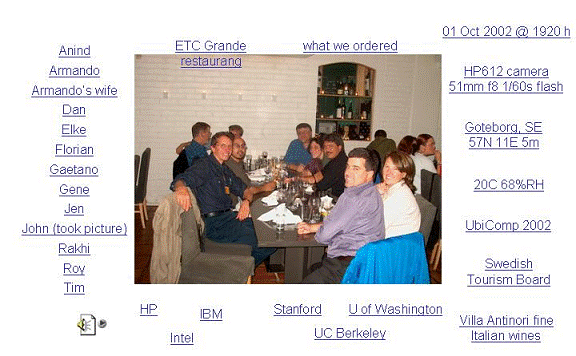
Figure 1. What do you get when you take a ubi-picture?
Cool shock of recognition, similar in so many ways except we didn't have flickr yet. I need one of those camera blogjects so I can make ubiphotos. Yes, definitely.
things that matter
So much catching up to do...for instance this Manifesto for Networked Objects by Julian Bleecker. It's quite nice. I started out a bit skeptical (there's that Internet of Things thing again). I rather liked the discussion of blogjects, I think it's a felicitous coinage even though I might argue that blogging is too narrow a niche to confine ourselves in, maybe some more on that later. But the hook that snagged me and reeled me in was this last bit, on the significance of it all:
The important aspect of the Internet of Things is not that Arphids and data transponders are now connected onto the Internet. The significance of the Internet of Things is not at all about instrumented machine-to-machine communication, or sensors that spew reams of data credit card transactions, or quantities of water flows, or records of how many vehicles passed a particular checkpoint along a highway. Those sensor-based things are lifeless, asocial recording instruments when placed alongside of the Blogject.Just like the motivation of the “alpha” blogger, the character of the motivated Blogject is to make, disseminate and enhance meaning, to draw attention and to be assertive. Like the alpha blogger, the Blogject enters into conversations that yield consequences. It's not at all interesting to have my car “blog” routine things such as the routes I've driven, its time-average fuel consumption, or the street address of a restaurant I've just passed that has a menu that would appeal to my palette based on previous restaurant experiences. It is much more consequential, and much more assertive of a first-class participant in the network of social discourse for flocks of vehicles to provide macro-scale insights into how much fuel is consumed hourly on Interstate 405 in the Los Angeles basin, or how many tons of pollutants are exhausted into the atmosphere every hour.
...
What if our RSS aggregators could tune into feeds from Amazonian forest and the daily clear-cut blog? Or critter cam video blogs that show us how really nasty seal bulls can be to their pups when they're not playing their circus act at Sea World. And video blogs from schools of dolphins and whales that will make it increasingly difficult to ignore the plumes of toxins in the oceans and the slaughter of their kin by whalers and felonious fishing fleets.
End to end, one of the best rants I've seen on how all this ubi-stuff could usefully make a better world.
the internet of people, places and things and various other stuff
This term "the Internet of Things" has been making the rounds for quite awhile now. It's a catchy phrase that refers to objects in the physical world becoming first class citizens of the Net, either through direct connection or via some sort of physical hyperlink like a visual code or RFID tag. I'm all for it, you know. But I don't like the term, because it's only half right which is I guess better than not right at all but still it misses half the point. See?
One thing I don't get is why Things have such a privileged status as to deserve their own Internet, as compared to People and Places. Or Dogs. Or Songs. Or identifiable Entities in general, really, because that's what we are going on about here, right? Yes, we are busily bridging the physical and digital worlds, and at the asymptote everything will be connected or linked to everything else through the Net. So maybe we should call it the Internet of Everything? Of course at that point you should say that Everything is logically implied and we might just as well call it the Internet ;-)
Anyway, shouldn't it be a kiss of some fateful kind, that we now have this ITU special report, "The Internet of Things"?
Written by a team of analysts from the Strategy and Policy Unit (SPU) of the ITU, the report takes a look at the next step in "always on" communications, in which new technologies like RFID and smart computing promise a world of networked and interconnected devices that provide relevant content and information whatever the location of the user. Everything from tires to toothbrushes will be in communications range, heralding the dawn of a new era, one in which today's Internet (of data and people) gives way to tomorrow's Internet of Things.
SPU, is that pronounced "spoo"? Smart toothbrushes, wow, we've come a long way from personal jet packs, haven't we? God, I'm feeling so snarky here, I'm sorry folks, must be that DC miasma poisoning my brainz. It's just that I thought we went through all of this years ago. Guess I'm getting ubi-burnout.
So I dunno, it would sure be good to have a handy term to describe this situation where so many new sensing, hardware, software, networking, and media technologies are maturing simultaneously and fomenting this immense upwelling of connectedness, creativity and worry. But I'm sure not calling it the Internet of Things. It just tastes wrong.
i'm the spime
In a world of smartifacts, blogjects, ubimedia, the Internet of Things, no matter what you want to call it, we're sure to have physically linked hypermedia, right? Physical stuff with explicit hyperlinks to digital stuff? Good. So we've got your open-the-book-and-it-just-starts-playing theme song to Sterling's Shaping Things, right down here (with gratitude and apologies to Frank Zappa):
I'm the SpimeI am gross and perverted
I'm obsessed 'n deranged
I have existed for years
But very little has changed
I am the tool of the government
And industry too
For I am destined to rule
And regulate youI may be vile and pernicious
But you can't look away
I make you think I'm delicious
With the stuff that I say
I am the best you can get
Have you guessed me yet?
I'm the spime oozing out
From your InternetYou will obey me while I lead you
And eat the garbage that I feed you
Until the day that we don't need you
Don't go for help...no one will heed you
Your mind is totally controlled
It has been stuffed into my mold
And you will do as you are told
Until the rights to you are soldThat's right, folks
Don't touch those keysWell, I am the spime from your Internet
Oozing along on your living room floorI am the spime from your Internet
Can't stop the spime, people, lookit me go
Nanook, no-nooo!
January 26, 2006
everyware
I'm looking forward to Adam Greenfield's forthcoming book Everyware. Mark the date, February 17, 2006, and be there. In the meanwhile, have a read of this nice interview with Adam.
Ubicomp is far more than “smart” objects, which might be best regarded as a symptom of a deeper paradigm just now unfolding. For me, it’s fundamentally about the surfacing of information that has always been latent in our lives; pattern recognition and machine inference based on large amounts of such information; and about the domain and scale of technical mediation contemplated - both wider and narrower, higher and lower than has been the case previously.
Mmm, mmm, good. And hey Alex, don't you think "everyware" is a pretty decent word, post-cyberspace-wise? I can almost, almost imagine a Gibson book by that name. On second thought, it would be a no-brainer for Rucker. Eh, never mind, Adam has beat them both tuit.
January 6, 2006
supporting interspecies social awareness
Just got my copy of the UIST 2005 proceedings, and was rather amused to find this paper by Mankoff, Dey et al: Supporting interspecies social awareness: using peripheral displays for distributed pack awareness.
In interspecies households, it is common for the non homo sapien members to be isolated and ignored for many hours each day when humans are out of the house or working. For pack animals, such as canines, information about a pack member's extended pack interactions (outside of the nuclear household) could help to mitigate this social isolation. We have developed a Pack Activity Watch System: Allowing Broad Interspecies Love In Telecommunication with Internet-Enabled Sociability (PAWSABILITIES) for helping to support remote awareness of social activities. Our work focuses on canine companions, and includes, pawticipatory design, labradory tests, and canid camera monitoring.



On the Internet, nobody knows your lead author is a dog. As for peer review... well, let's just not go there ;-)

